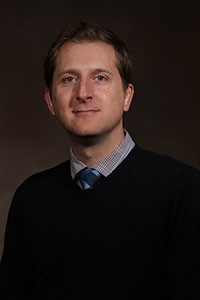 All are welcome to an invited seminar by Jeremy Thornock, Research Assistant Professor in the department of Chemical Engineering at The University of Utah. The title is: “Predicting Small NOx numbers with Large Computers.” The seminar will be from 3:00 to 4:00 p.m. on Wednesday January 14, 2015 in WEB 2250. There will be light refreshments afterwards.
All are welcome to an invited seminar by Jeremy Thornock, Research Assistant Professor in the department of Chemical Engineering at The University of Utah. The title is: “Predicting Small NOx numbers with Large Computers.” The seminar will be from 3:00 to 4:00 p.m. on Wednesday January 14, 2015 in WEB 2250. There will be light refreshments afterwards.
Abstract – Predicting Small NOx numbers with Large Computers
The San Joaquin Valley (SJV) in California is well known for producing agriculture (~13% of the US total production by dollar) and petroleum (heavy oil). Unfortunately, the SJV is also well known for having the some of the unhealthiest air in the nation. The primary cause of the unhealthy air is due to activities related to its two major exports (food and petroleum). As a result, the SJV Air Pollution Control District has instituted increasingly stricter regulations to control sources of pollution. Ground level ozone and PM2.5 values are of particular concern. NOx, being a precursor to both pollutants is therefore heavily regulated. Faced with a near-term 66% NOx reduction requirement (current 15ppm to 5ppm in 2016 on stationary steam generators), oil producers are looking for quick, low cost solutions for meeting the new standard. Traditional methods of promoting concepts to engineering solutions may have too long a time scale to address this problem. As a result, we look to advanced multi-physics simulation to provide quick turn around on assessing design and retrofit options for oil-field steam generators. In this discussion, we will demonstrate that simulations run across thousands of computing cores have provided engineers with information to enable low-cost retrofit options that meet the new ultra-low NOx standard.
Biography:
Jeremy Thornock is a Research Assistant Professor in the department of Chemical Engineering at The University of Utah. He received his undergraduate degree (1999) and PhD (2006) from the same institution. His work if focused on developing advanced simulation software for performing multi-physics, multi-scale simulations run in high-performance computing environments. Much of his work has focused on applying the simulation tools to combustion applications, from large accidental pool fires to coal boilers.